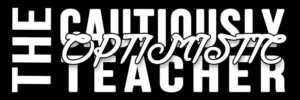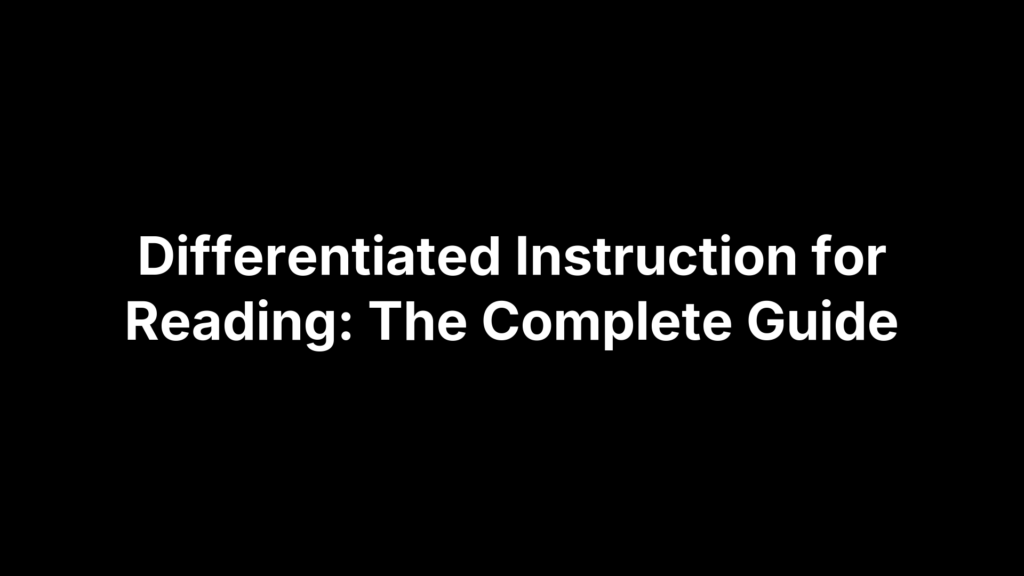Differentiated instruction for reading is simply teaching to the same standards while adjusting the path to get there. You vary what students read (content), how they engage with it (process), how they show understanding (product), and the setup that supports them (learning environment). Using quick assessments and flexible small groups, you match instruction to each learner’s readiness, interests, and strengths—so a child mastering phonics and a peer analyzing theme both make real progress in the same class period.
This guide turns that idea into a workable plan. You’ll see why differentiation matters now, learn the core framework, and use assessment to form groups and set goals. We’ll map a daily block that balances whole group, small groups, and centers; share a ready-to-use strategy menu; and break down what to do for phonics, fluency, vocabulary, and comprehension. You’ll get grade-band mini-lessons, supports for multilingual learners, students with IEPs/504s, and advanced readers, plus management routines, progress-monitoring tips, common pitfalls to avoid, and time-saving templates and tools. Let’s build a reading block that works tomorrow—and keeps working all year.
Why differentiate reading instruction today
Classrooms now include wide ranges of readiness, languages, and IEPs. If you teach only whole class, you lose kids who aren’t ready and those who already understand. Differentiated instruction for reading aligns to this reality: use ongoing assessment to create flexible, small groups, adjust content/process/product/environment, and intensify time for students who need it. The result is equitable access to grade-level work and accelerated growth—without abandoning core Tier 1 instruction.
Core framework: content, process, product, and learning environment
Think of differentiated instruction for reading as four adjustable levers you tune to students’ readiness, interests, and learning profiles. You keep the goal constant but vary the route. Use these levers together to maintain access to grade-level standards while providing targeted support or extension.
- Content: Adjust what students read (text level, genre, background knowledge) and how much you pre-teach vocabulary or text structure to access grade-level material.
- Process: Vary how students learn—small groups, learning centers, graphic organizers, jigsaw, manipulatives, or tiered questioning.
- Product: Offer options to show understanding—oral retell, storyboard, analytical paragraph, podcast, or choice boards with tiered tasks.
- Learning environment: Shape the setting—flexible seating, quiet nooks, technology supports (e.g., audio), and teacher-led groups with time intensity matched to need.
Use assessment to drive groups and goals
Differentiated instruction for reading starts with evidence. Use quick diagnostics and observations to learn each student’s readiness, interests, and learning profile, then form flexible, need-based groups. Keep the core curriculum, but adjust time and intensity: smaller, more frequent teacher-led lessons for students at risk; larger, less frequent meetings for those on level.
- Screen readiness: Use pre-tests, teacher questions, and KWL charts to gauge phonics, vocabulary, fluency, and comprehension.
- Capture interests/profile: Short interest inventories and observations inform materials and grouping preferences.
- Form flexible groups: Group by shared skill needs; regroup as needs change.
- Set short-term goals: Clear, measurable targets (e.g., “Decode short vowel words with accuracy”).
- Match time and size: 1–4 students for struggling readers; 5–8 for on-level; meet more often as need increases.
- Compact when mastered: If a student already shows mastery (e.g., short vowels), skip redundant lessons and move to the next skill.
- Monitor and adjust: Use anecdotal notes, student work, and checks for understanding to refine groups and goals.
Plan your block: whole group, small groups, and centers
A predictable daily block lets you protect Tier 1 instruction and deliver targeted support. Start together to set the purpose, then rotate through teacher-led small groups while peers work at centers. Match group size and frequency to need (smaller and more often for students at risk; larger and less frequent for on-level), and keep groups flexible based on ongoing checks.
- Whole group (10 min): Preview the goal, pre-teach key vocabulary/text structure, model a strategy, and launch center expectations.
- Rotation 1 (15 min): Teacher Group A (1–4 highest-need students); peers at independent reading, word work, or a choice-board task.
- Rotation 2 (15 min): Teacher Group B (5–8 on-level); peers continue centers or partner reading/listening station.
- Rotation 3 (15 min): Teacher Group C (extension/compact content); peers complete centers and brief reflections.
- Wrap-up (5 min): Quick share/exit check to inform regrouping and next steps.
Strategy menu you can pull from tomorrow
When you plan differentiated instruction for reading, pick two or three high-yield moves and run them consistently. Keep the standard steady, but vary entry points and supports. Use this quick menu to mix content, process, product, and environment without rebuilding your whole block.
- Choice boards: Varied products; require two modes; scaffold options.
- Learning centers: Rotate word work, listening fluency, comprehension responses.
- Task cards: Bite-size skill practice; assign by need.
- Tiered assignments: Same goal, different complexity and support.
- Flexible grouping: Regroup frequently by assessed skill.
- Compacting: Pre-assess; skip mastered skills; extend learning.
- Student-led discussions: Peer questions, debates, predictions to deepen meaning.
Differentiate by reading component: phonics, fluency, vocabulary, and comprehension
Differentiated instruction for reading works best when you target the exact component each learner needs. Use brief, explicit lessons in small, flexible groups to keep grade-level goals accessible while adjusting texts, scaffolds, and products. Ongoing checks move students between phonics, fluency, vocabulary, and comprehension. Match group size and frequency to need, then regroup as evidence shifts.
- Phonics: Teacher-led decoding: sound-symbol work, blending, word building, decodables; compact mastery; apply in text.
- Fluency: Model, then echo/choral read; repeated readings with audio; track accuracy, rate, expression.
- Vocabulary: Pre-teach key terms; student-friendly definitions, visuals, morphology; provide choice and usage frames.
- Comprehension: Teach questioning and text structure with organizers; tier prompts; offer retell, storyboard, or paragraph.
Grade-band examples and mini-lessons
Differentiated instruction for reading should feel doable tomorrow. Keep the standard the same, then tweak content, process, product, and time intensity for each small group. Below are tight, 15-minute mini-lessons by grade band that reflect flexible grouping, targeted skill work (phonics, fluency, word work, comprehension), and choice in how students show learning.
-
K–2: Phonics to text (decodables)
- Model the target spelling-sound with a few example words.
- Build-and-blend with tiles; quick word reading.
- Echo/choral read a decodable sentence or page.
- Exit check: picture/word sort or read three target words.
-
Grades 3–5: Fluency + meaning
- Pre-teach two key vocabulary words.
- Listen once, then choral read a short passage.
- Partner repeated readings with feedback.
- Product choice: oral retell or storyboard using a task card.
-
Grades 6–8: Comprehension with tiered prompts
- Preview text structure and purpose with a graphic organizer.
- Jigsaw sections; groups annotate for claim, evidence, reasoning.
- Tiered discussion questions (from recall to analysis).
- Product choice: analytical paragraph, podcast-style discussion, or scene re-tell from a character’s point of view.
Support multilingual learners, students with IEPs/504s, and advanced readers
Keep the goal constant, then tune content, process, product, and environment so every student can access grade-level reading. Use flexible, small groups driven by ongoing assessment, and match time and intensity to need—smaller, more frequent lessons for students requiring more support, with regrouping as evidence changes.
- Multilingual learners: Pre-teach essential vocabulary and text structure with student-friendly definitions and visuals; model oral responses; offer audio support and varied ways to show understanding.
- Students with IEPs/504s: Use explicit, teacher-led instruction in small groups (often 1–4), meet more frequently, and honor environmental preferences (quiet space, seating). Provide clear organizers and multiple product options.
- Advanced readers: Compact mastered skills, offer tiered assignments and choice boards, and use interest groups. Provide extension tasks (e.g., re-tell from a character’s point of view) and opportunities to lead discussion.
Manage the classroom during small groups
Small-group time only works if the rest of the class runs itself. Build predictable routines, post a clear rotation schedule, and rehearse transitions. Keep centers simple, standards-aligned, and largely self-checking so you can give full attention at the teacher table. This is what makes differentiated instruction for reading sustainable every day.
- Visual rotations + timer: Post who goes where and for how long.
- Fewer, consistent centers: Independent reading, word work, writing/response, listening station.
- Self-checking tasks: Task cards with keys, choice boards, and rubrics at the station.
- Help protocol: Peer check → anchor chart/model → raise a card for teacher.
- Tight materials management: Labeled bins, ready-to-go sets, and clear cleanup cues.
- Noise and space norms: Voice-level chart and flexible seating options.
- Quick accountability: Center logs or exit slips; collect one artifact per day.
- Protect the teacher table: A visible “in conference” signal and scheduled “appointments” for questions.
Monitor progress and grade for growth
Progress monitoring keeps groups fluid and makes grading fair. Name a clear, short-term target for each group, gather light evidence every day, and adjust time, text, and scaffolds accordingly. Grade what students can do now against the standard, not the average of old and new work.
- Set micro-goals: e.g., “decode short vowels” or “cite evidence with a frame.”
- Use quick checks: exit slips, 30-second conferences, anecdotal notes, KWL updates.
- Check by component: phonics word reading; fluency accuracy/rate/expression; vocabulary-in-context; comprehension via organizer or retell.
- Document and regroup: log choices and meetings, regroup weekly, and report growth with short, standards-aligned rubrics.
Avoid these common pitfalls
Differentiated instruction for reading works when you sidestep a few predictable traps. Keep the standard steady and adjust time, grouping, and supports based on evidence.
- Static groups/labels: Regroup weekly using quick checks.
- Lowering rigor: Keep grade-level texts; scaffold vocabulary/structure.
- Compacting without a plan: Pre-plan enriched/accelerated tasks.
- Busywork centers: Provide clear directions, models, self-checks.
- Oversized high-need groups: Teach 1–4 students, more frequently.
- Replacing Tier 1: Differentiate to supplement, not replace core.
Templates and tools to save time
You don’t need more hours—just reusable templates and a few lightweight tools. Build a kit once and reuse it all year to plan groups in minutes, launch centers smoothly, and capture quick data for differentiated instruction for reading.
- Small-group planner: 15-minute goal, text, tiered prompts, notes.
- KWL + interest inventory: Readiness and motivation snapshot.
- Choice board + task cards: Self-checking, center-friendly practice.
- Learning contract template: Pace, product, checkpoints.
- Compacting form: Preassess, excuse mastery, extend.
- Exit-slip bank + quick rubrics: Grade for growth fast.
- Differentiation helpers: Use our Differentiated Instruction Helper, Worksheet Maker, and Question Generator to auto-build groups, centers, and prompts in seconds.
Final thoughts
Tomorrow’s reading block can run smoother than today’s. Keep the standard steady, then tune content, process, product, and environment with flexible groups, simple centers, and quick progress checks. When you target the right skill at the right time, readers at every level move—without losing the coherence of Tier 1 instruction.
Start small: choose two high‑yield moves, set one micro‑goal per group, and regroup weekly based on evidence. Then layer in choice boards, compacting, and self-checking centers. If you want templates and time-savers, our tools and weekly ideas live at The Cautiously Optimistic Teacher. You’ve got a plan—now make tomorrow count.

